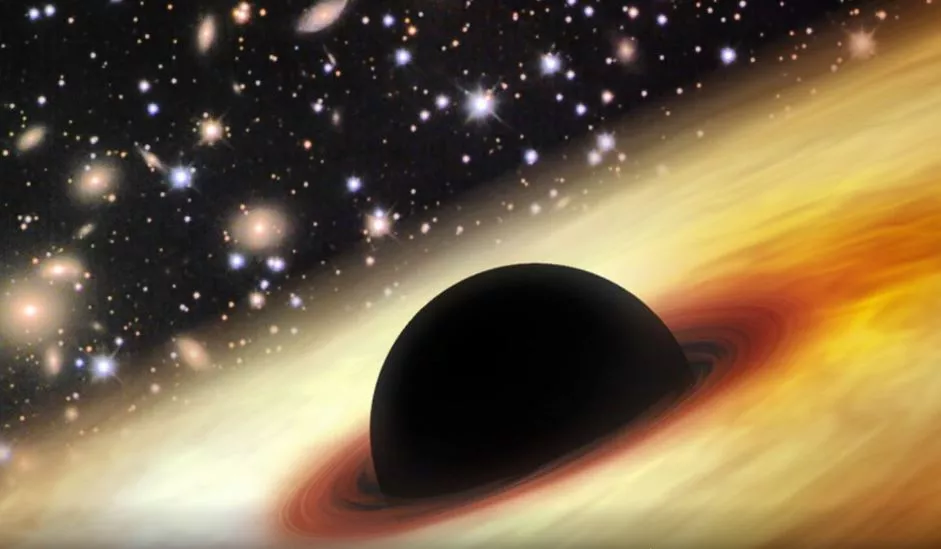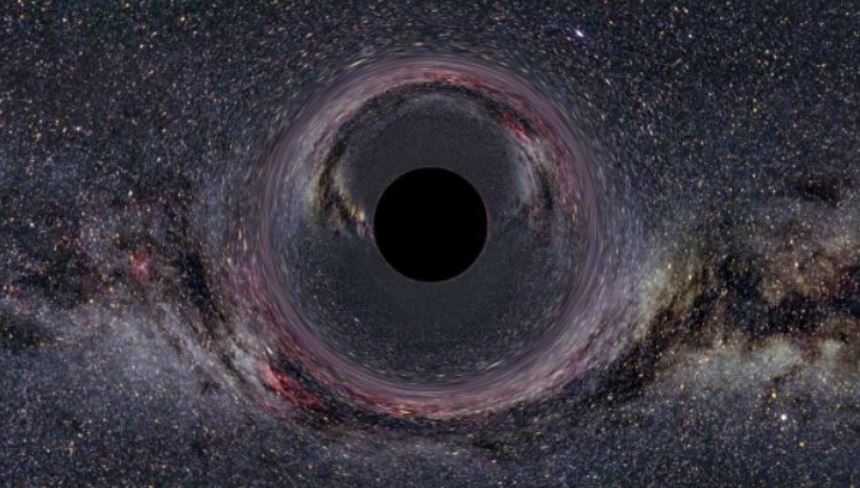Simple Ways To ‘Weigh’ A Monster Black Hole

How do you weigh something that you can’t even see, whilst most earthlings dread by its mere mention. Most of us can imagine weighing earthly items; even mega-structures and so on. Scientists have even managed to weigh celestial objects and even the galaxies itself. But this time they did something even more unimaginable. Yes, true it is. Astronomers have found a way to measure the weight of super-massive Black Holes lurking in the core of spiral galaxies, million of light years away from us.
Before further analysis, like a simple health check, we need to measure the weight of these black hole giants. Now there are several ways proposed by the researchers depending upon how far the black hole is and which kind of galaxy does it resides in.
For example, NGC 1097, which is a barred spiral galaxy at a distance of 45 million light years away, astronomers used Atacama Large Millimeter/submillimeter Array (ALMA), an astronomical interferometer of radio telescopes, to measure the super massive black hole at its centre. The results as it comes out is that the black hole is about 140 million times heavier than our Sun.
The research team at the Graduate University for Advanced Studies in Japan, precisely measured the distribution and motion of two molecules- Hydrogen Cyanide (HCN) and Formylium (HCO+) present near the galactic center. The ALMA observations were then compared to various computer-generated mathematical models, each corresponding to a different mass of the gigantic black hole.
Now within the Milky Way, or the galaxies close to ours, powerful optical/infrared telescopes track the motion of stars as they hurl around the core of our galaxy. Sometimes in place of stars, astronomers also track the motion of megamasers (astrophysical objects that emit strong radio waves and are found near the center of some galaxies). Megamasers are very rare and our Milky Way has none.
Elliptical galaxies behave differently than the spiral galaxies, thus the technique to study them is different. Astronomers track the motion of ionized gas in a galaxy’s central bulge, leaving few options when it comes to measuring the mass of supermassive black holes in spiral galaxies.
Our Milky Way’s very own monster black hole is nearly 25,000 light years away from the earth. To measure its weight astronomers have zoomed into Sagittarius A* — a region bright in radio wave emissions, and track the motions of individual stars around an invisible point using incredibly precise infrared telescopes. This invisible point, is the location of a supermassive black hole having 4 million times the mass than our Sun.
The ALMA observations are quite exquisite in details and befit the computer simulated models. Since the previous theories suggest that the galaxies and their resident black holes evolve together, the ALMA technique to study the galaxies and outer space could be the key to unlocking the mysteries of Universe.
Source: Alma
Recommended: Dark Matter Complexity Revealed, Gets Even Darker







